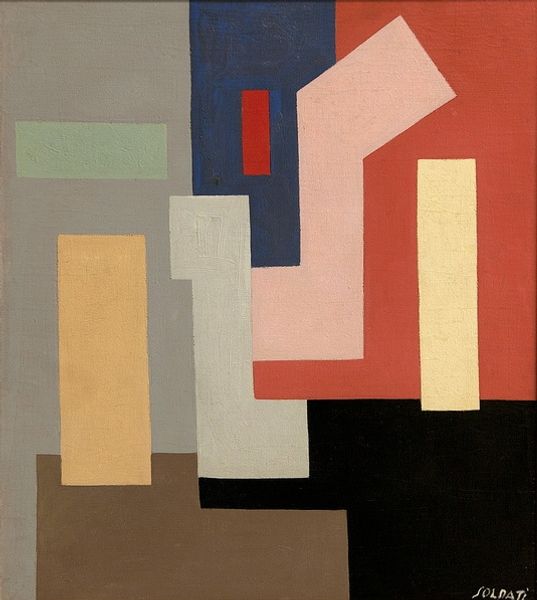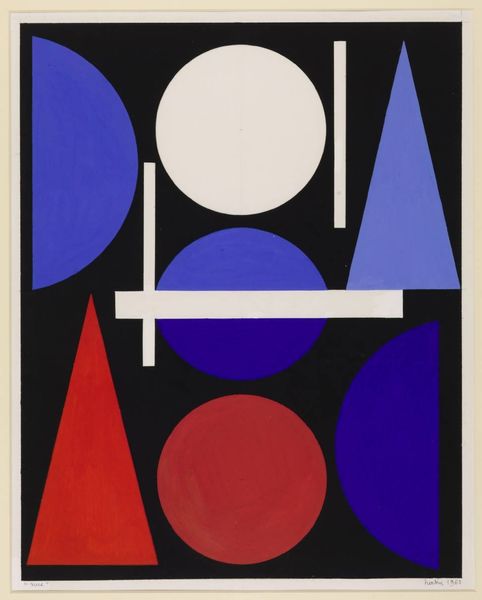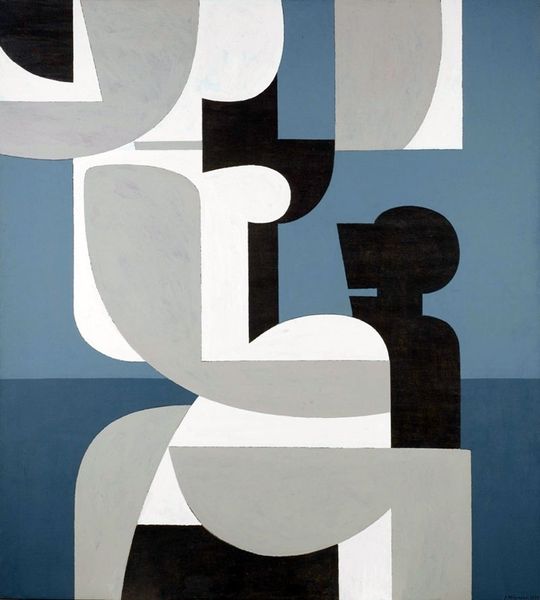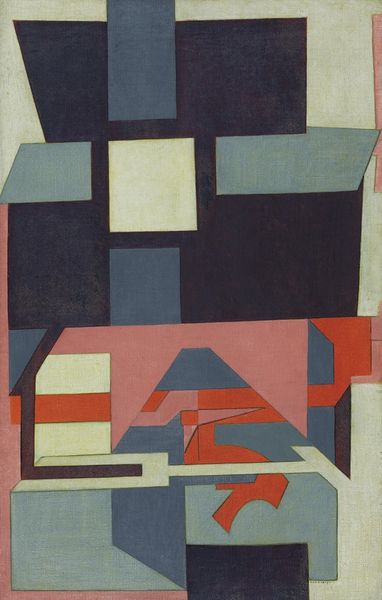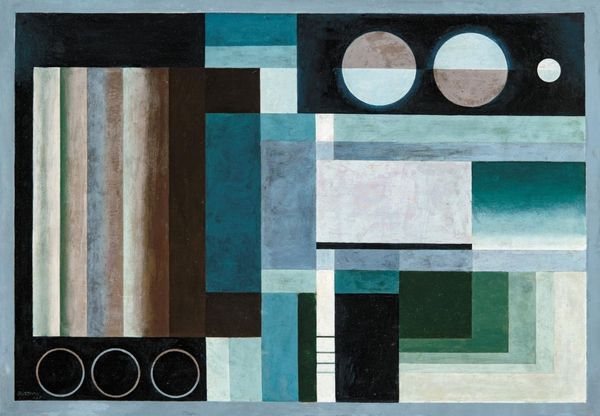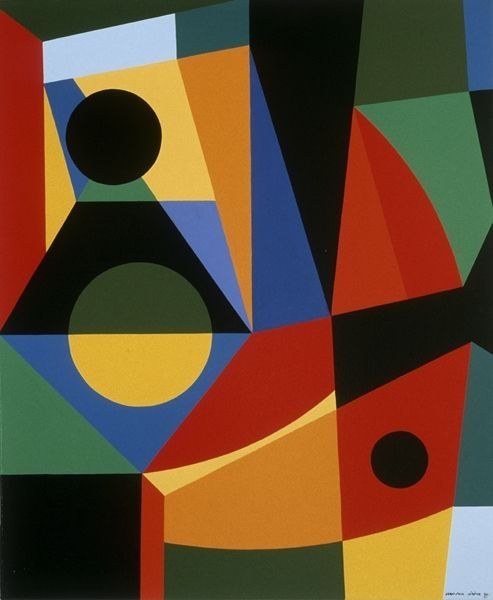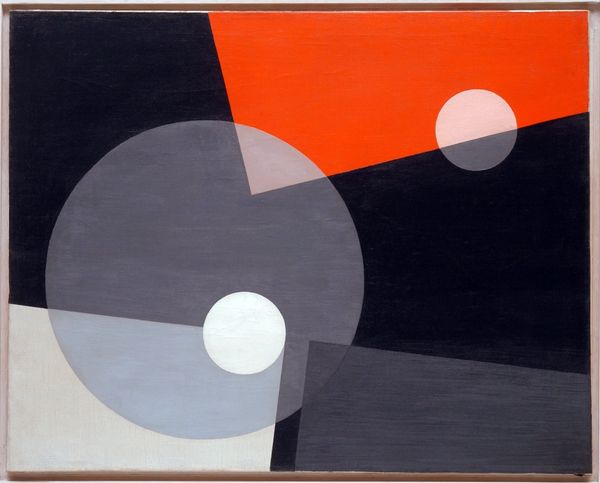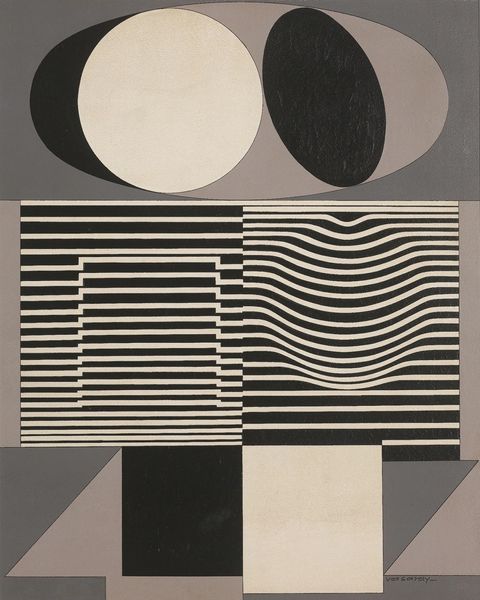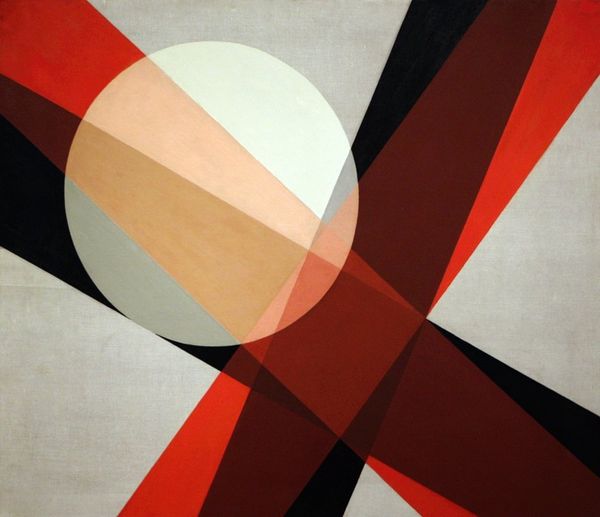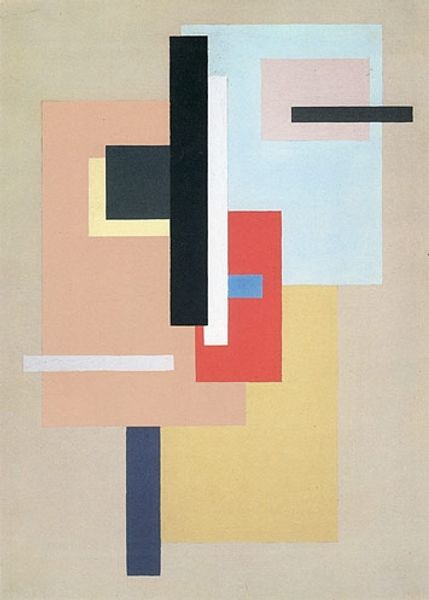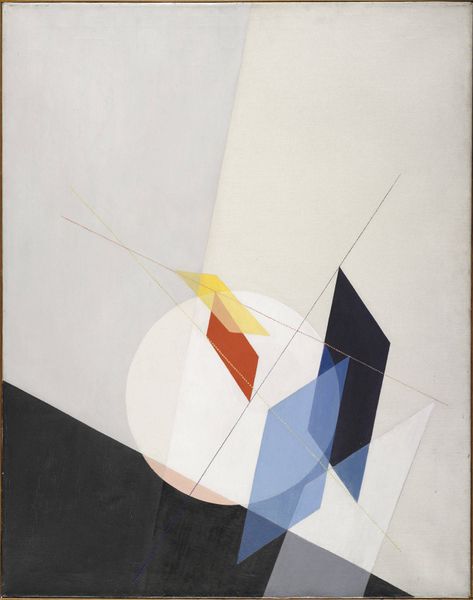
Dimensions: support: 1499 x 1251 mm frame: 1541 x 1290 x 48 mm
Copyright: © The estate of Friederich Vordemberge-Gildewart | CC-BY-NC-ND 4.0 DEED, Photo: Tate
Editor: Friedrich Vordemberge-Gildewart's "Composition No. 15" at the Tate, it is a very large and striking work. It's very geometric, with a red square floating prominently. What social context might have influenced this piece? Curator: Well, consider the time. Geometric abstraction arose during a period of intense social and political upheaval. Artists aimed to create a universal visual language, one free from nationalistic associations. Does this desire for a universal language resonate with you? Editor: It does. It’s like a search for common ground in a fractured world. Perhaps this work then becomes more about a utopian ideal than just shapes and colors? Curator: Precisely! And think about the museum's role in preserving such ideals. How does exhibiting this piece shape its meaning for contemporary audiences? Editor: I guess displaying it highlights the enduring relevance of that search for order and harmony, even today. Thanks! Curator: My pleasure. It's fascinating how historical context transforms our perception of abstract forms.
Comments
tate 8 months ago
⋮
http://www.tate.org.uk/art/artworks/vordemberge-gildewart-composition-no-15-t01474
Join the conversation
Join millions of artists and users on Artera today and experience the ultimate creative platform.
tate 8 months ago
⋮
Vordemberge-Gildewart was one of the first painters to work throughout his career in an abstract style. In 1924 he became a member of the De Stijl group and in 1932 he joined the Abstraction-Création group in Paris. Trained in interior design and architecture, Vordemberge initially made reliefs and sculptures. By 1923, he wrote, he 'started making deliberate use of colour' in making paintings. This is one of his earliest paintings and exemplifies what he called 'Absolute art'; namely art without content or object. Colour, form, contrast and space were the only objects. Gallery label, April 2012

